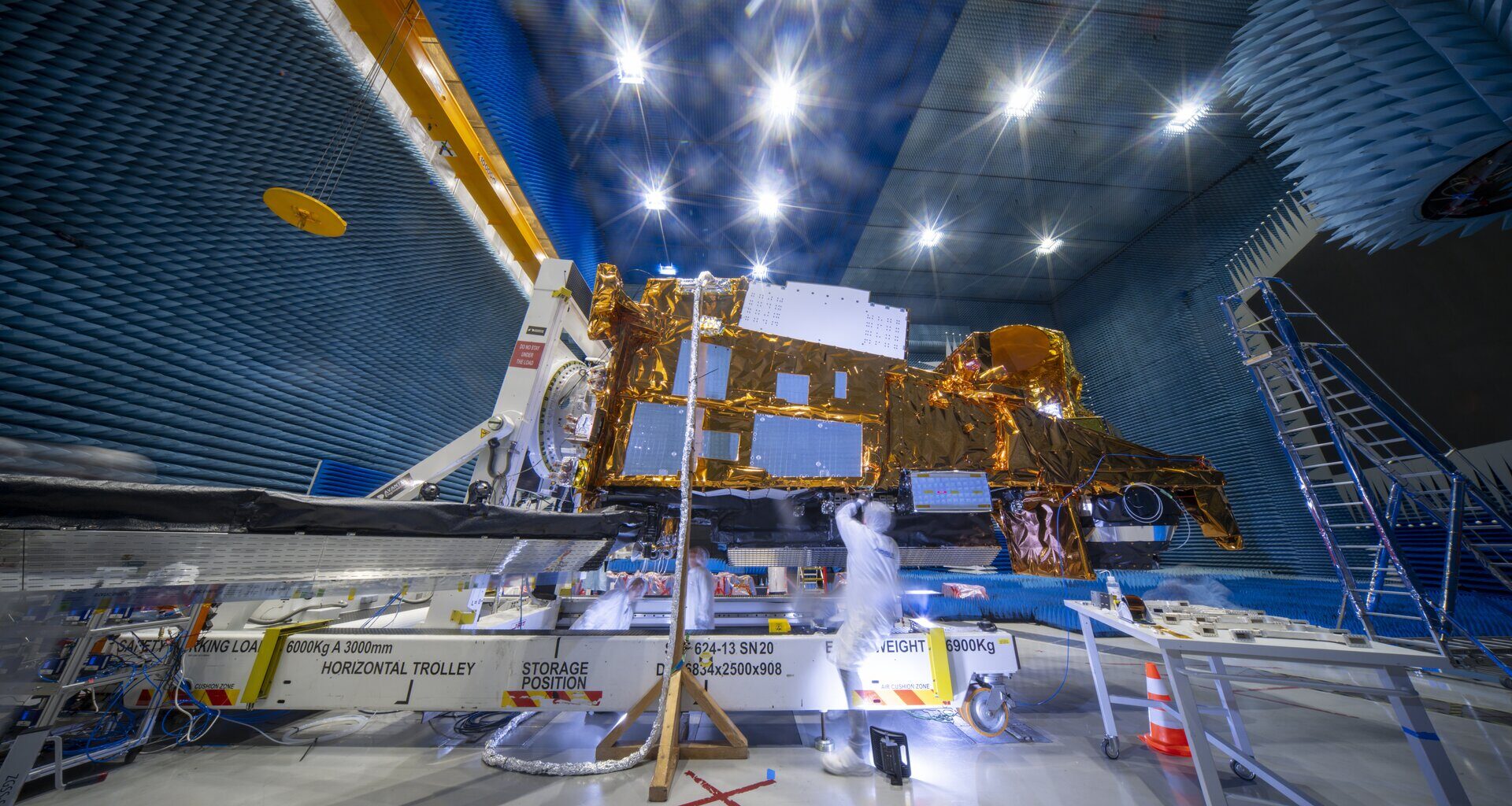Applications
24/11/2025
33 views
1 likes
The MetOp Second Generation-B1 satellite has entered its third and most delicate round of pre-launch testing, marking another step towards strengthening Europe’s weather forecasting capabilities.
Engineers are now putting the satellite through rigorous electromagnetic compatibility tests to ensure that its many electronic systems can operate without interfering with one another once this new weather satellite is in orbit around Earth next year.
The MetOp Second Generation mission relies on a duo of complementary satellites flying in polar orbit.
The first, MetOp-SG-A1, was launched just over three months ago, and engineers are now preparing its partner, MetOp-SG-B1, to join it next year. The two satellites are equipped with complementary suites of instruments – 11 instruments between them – to provide high-resolution measurements of temperature, precipitation, clouds, winds, and other key atmospheric and environmental variables.
MetOp Second Generation satellite pair
As one of the most advanced atmospheric monitoring systems ever deployed, the MetOp-SG mission, which comprises three successive pairs of satellites, will supply meteorologists with the global data essential for predicting storms, tracking climate trends, and improving the accuracy of everyday weather forecasts for more than two decades.
The MetOp-SG B-type satellites carry five instruments: a scatterometer, to provide ocean-surface wind vectors and land-surface soil moisture, a radio occultation sounder (which is also on the A-type satellites) to provide atmospheric temperature and humidity profiles, as well as information about the ionosphere, a microwave imager to monitor precipitation and to assess sea-ice extent, an ice cloud imager to measure cloud-ice water, and an Argos-4 advanced data collection system which gathers and transmits data from surface, buoy, ship, balloon and airborne platforms.
Alongside with these all-important instruments, the satellite also carries the usual array of onboard computers, power systems, and high-rate transmitters operating in S-, X-, and Ka-bands to stream down the massive volumes of data the satellite collects.
Each of these systems has been tested independently, but they must ultimately function side by side without interfering with one another. This is where the electromagnetic compatibility tests come in.
Working on MetOp Second Generation-B1’s scatterometer
To perform these tests, engineers at Airbus’ facilities in Toulouse, France, have placed MetOp-SG-B1 inside a cavernous anechoic chamber – a kind of artificial electromagnetic void.
The room is lined with the striking blue pyramidal foam absorbers. The entire chamber is shielded like a Faraday cage, blocking outside signals while preventing internal reflections. Inside this silent environment, the satellite is subjected to a series of rigorous trials.
The first phase, called launcher compatibility, ensures that the satellite won’t emit signals that could disrupt the Ariane 6 rocket – and that it can withstand the electromagnetic environment generated during the launch.
MetOp Second Generation-B1 heads for electromagnetic compatibility tests
Next, receiver margin tests measure the noise each instrument picks up from the satellite itself, confirming that the sensors remain far more sensitive to Earth’s signals than to their neighbouring instruments’.
Finally, auto compatibility checks verify that every instrument operates normally when all systems are running at full power.
These campaigns are lengthy, typically stretching from two to four weeks. Although they rely on sophisticated spectrum analysers and advanced signal-processing tools, the work often requires hands-on improvisation.
When unexpected interference pops up, engineers may resort to a surprisingly low-tech but time-tested solution: applying small pieces of aluminium foil or tape to track down and suppress stray emissions. The blend of cutting-edge science and practical fieldcraft has long been a hallmark of this type of testing.
With this final environmental hurdle now underway, MetOp-SG-B1 is moving steadily toward its 2026 launch, and one step closer to bolstering Europe’s weather forecasting capabilities.
MetOp Second Generation-B1in the anechoic chamber
Like

